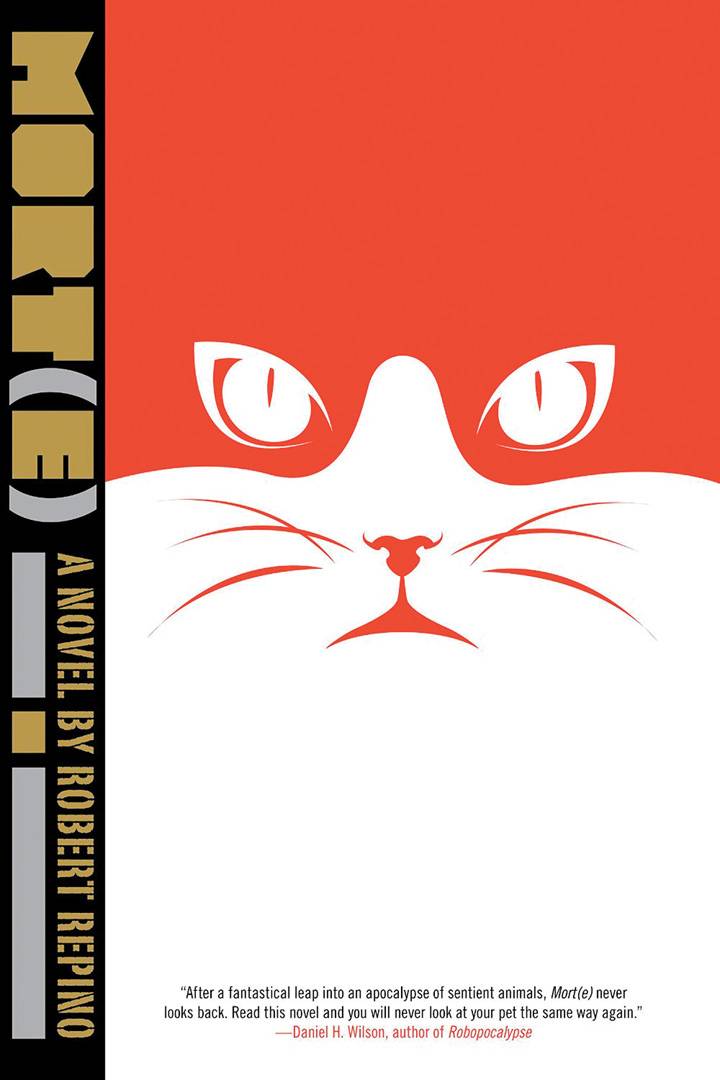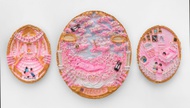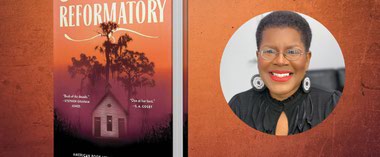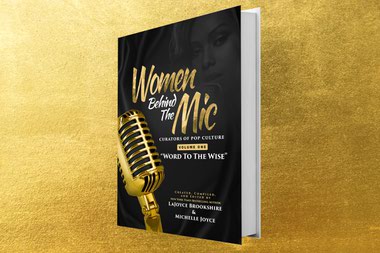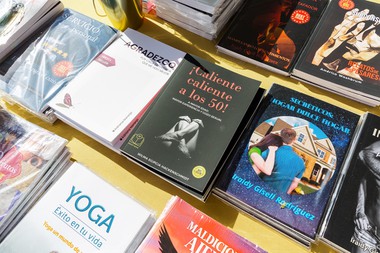
Mort(e) By Robert Repino, $27.
Of all the horrible fortunes you figure await rapacious humans in the payback of an enraged Nature, our pets rising up against us, suddenly endowed with human sentience and size and limbs, must rank among the worst. Cat owner Daniel Martini has already sustained significant cognitive assault, watching both his marriage and humanity’s grip on the planet dissolve, and is at the point of killing wife, children and self when Sebastian the cat, enlightened and embittered, levels him with his own shotgun.
Sebastian becomes the title character of Mort(e), a first novel of notable depth and invention by Robert Repino. After the confrontation with Daniel, Sebastian reluctantly takes up with a special-forces-like band of wild animals, also newly imbued with human attributes. He takes the name Mort(e), Repino explains, because he has killed but also because it was “the name of a regular guy named Mort who was meant for a life surrounded by loved ones,” the “e” in parentheses because that sort of life was still only notional for Mort(e), regardless of how well he’d absorbed human symbols and social quirks.
Mort(e) is a “choker” among the wild animals, once collared and unsexed, but he enjoys the favor of leader Culdesac, a bobcat who knows Mort(e) is destined for something. That’s because Culdesac communicates with the force that released and empowered him, a millennia-old ant queen who has bred an army of horrifyingly huge ants that erupt from massive anthills and level cities. The ant queen transmits a chemical memory-force to animals and cedes them surface Earth. This is the TV-screen background to Daniel’s life-meltdown. Sebastian’s transformation is only the last indignity.
The challenge of any fantasyscape like this is maintaining plausibility consistently, anticipating any skeptical reader’s Well then how …? Repino manages to sustain the story without prompting much puzzlement. Only rarely does exposition intrude on the story of Mort(e) as he searches for a lost dog—a cross-species friend from erstwhile times—and his destiny in resolving the novel’s central questions: Will the ant queen crush humanity? Should she? And what’s love got to do with it? Without giving away too much: No, well … and a lot.
Human religion figures in the novel’s moral and existential questing, but Repino probes human nature, and Nature itself, without getting preachy. It’s noteworthy that Mort(e) underscores his skepticism of human beliefs by leaving the society of animals and humans altogether.
Find more by Chuck Twardy at chucktwardy.com.
